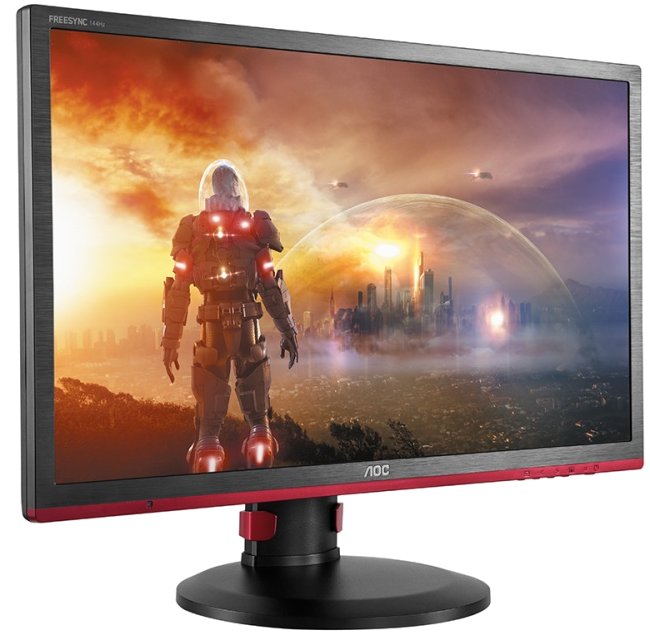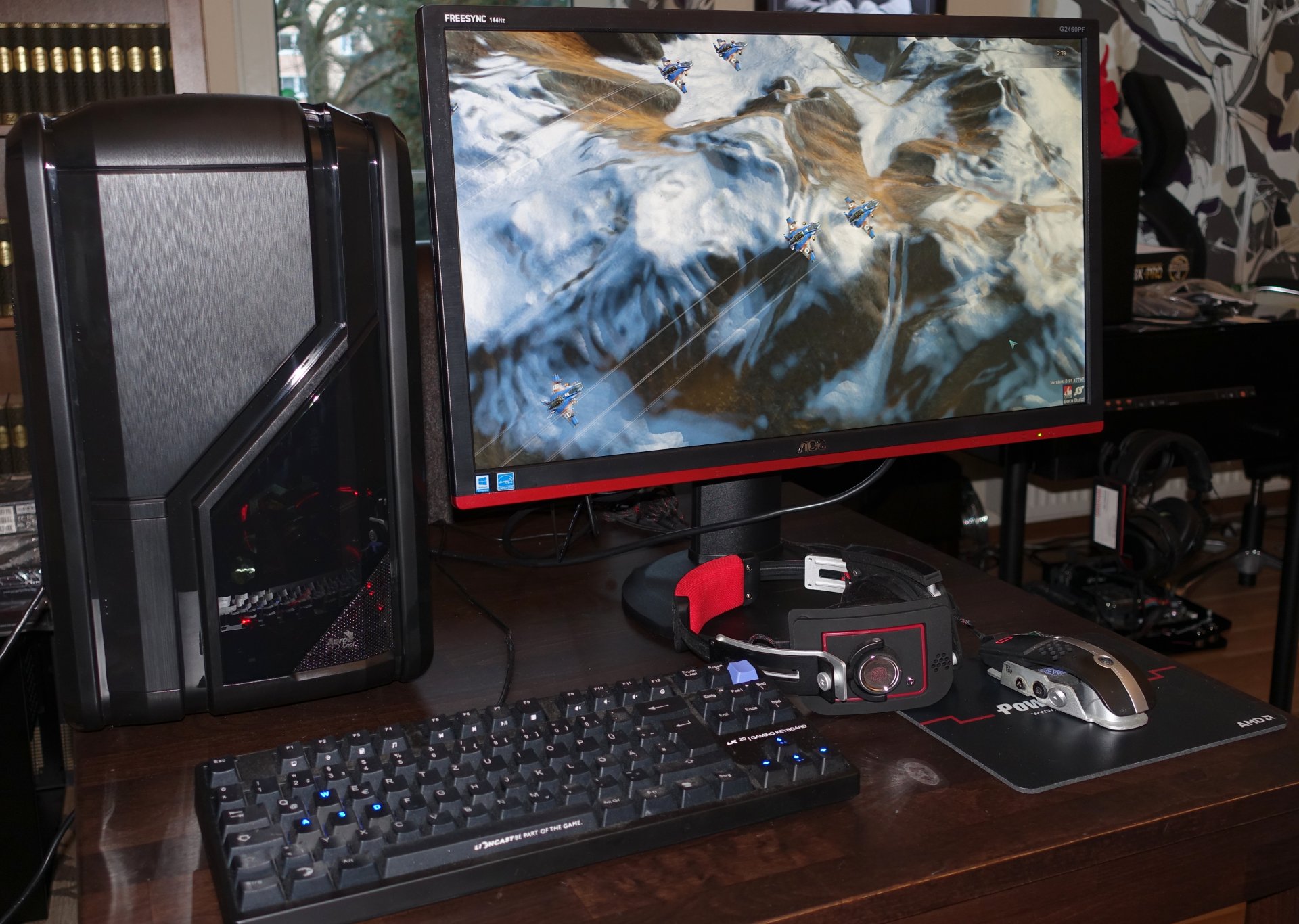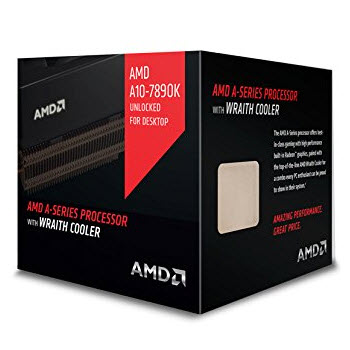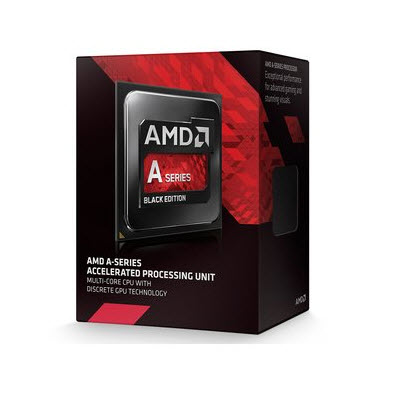AMD A10-7890K APU Review
AMD's new A10-7890K represents the very top of the low-cost APU family. We're answering whether it can breathe new life into the line via online gaming, or if its small clock rate bump just isn't worth more money compared to the A10-7870K.
FreeSync And Conclusion
FreeSync For Everyone?!
If you want to experience FreeSync on AMD's newest APU, then you'll almost certainly need a new monitor, and that's a tall order when we're talking about a very budget-conscious platform. AOC's G2460PF sells for approximately $240. It’s a 24-inch display with low enough latency for gaming and a TN-based panel that’s nice to look at for long periods of time.
The biggest problem with both of the major variable synchronization technologies, both AMD FreeSync and Nvidia G-Sync, is still the premium you pay for the screen. Perhaps AMD's plan to enable FreeSync over HDMI will help pull prices down a little.
Until then, enabling FreeSync requires a motherboard with DisplayPort output. Hopefully, more monitor options surface to give gamers with any budget options to choose between.
We did need to download a beta driver from AOC to get FreeSync working without problems at refresh rates down to 30Hz. The combination of this driver and AMD’s current Radeon Software Crimson Edition had FreeSync running smoothly on our APU-based platform, though. Once you're at that point, you find yourself asking how you lived without a variable refresh technology of some sort all these years.
Before we get to our conclusion, let’s take a look at how much a system like this, or a less expensive alternate version, would actually cost. The budget version has to make do without DisplayPort, but it does have a slightly better power supply.
| Header Cell - Column 0 | Our Setup | Inexpensive Version | ||
|---|---|---|---|---|
| APU | AMD A10-7890K | Approx. $180* | AMD A10-7870K | Approx. $130 |
| RAM | 16GB DDR3-2400 | Approx. $75 | 8GB DDR3-2133 | Approx. $45 |
| Motherboard | Asus A88X-Pro | Approx. $120 | MSI A68HM-P33 | Approx. $120 |
| Power Supply | ATX, 80+ Bronze 400W | Approx. $55 | ATX, 80+ Bronze 350W | Approx. $45 |
| SSD | Crucial BX200 240GB | Approx. $65 | Crucial BX200 240GB | Approx. $65 |
| Optical Drive | LG CD/DVD Super Multi Drive | Approx. $20 | None | --- |
| PC Case | Aerocool GT-RS | Approx. $75 | Raijintek Arcadia | Approx. $35 |
| Total | Row 7 - Cell 1 | Approx. $590 | Row 7 - Cell 3 | Approx. $440 |
*AMD set the A10-7890K’s MSRP at approximately $180. It’s not available in stores though, so we won’t know what the street price will be for a little while yet. Also remember that the above system doesn’t include an operating system. Its cost needs to be added in unless you already own a license.
Conclusion
AMD’s A10-7890K is an interesting APU...if you're a match for its target audience. Unfortunately, that's a fairly narrow slice of the market. Gamers wanting even a little bit more speed will find themselves disappointed. On an extreme budget, this is a good choice for online and browser-based games. In fact, what keeps us from recommending the A10-7890K wholeheartedly doesn't have much to do with the APU itself. Rather, its price to performance ratio just isn’t that great compared to the A10-7870K.
Get Tom's Hardware's best news and in-depth reviews, straight to your inbox.
Sure, the A10-7890K is slightly faster than its predecessor, and it does come with certain bragging rights given those factory clock rates. But we question whether those are worth the extra money. Frankly, we'd rather pick up the A10-7870K with its 125W no-name CPU cooler (which seems identical to the Wraith aside from its label) and overclock it a little bit.
FreeSync is a boon to the whole APU ecosystem, so long as you can push enough performance to keep it effective.
In the end, AMD’s special product launch doesn’t so much benefit enthusiasts as it does AMD itself. Like it or not, ultimately, the A10-7890K is a halo product intended to buy AMD a little more time before the next generation surfaces. The new APU does work as intended; it's just not a particularly attractive purchase at the current estimated price.
MORE: Best CPUs
MORE: Intel & AMD Processor Hierarchy
MORE: All CPU Content
Igor Wallossek is a Senior Contributing Editor for Tom's Hardware Germany, covering CPUs and Graphics. Connect with Igor on Facebook.
Follow us on Facebook, Google+, RSS, Twitter and YouTube.

Igor Wallossek wrote a wide variety of hardware articles for Tom's Hardware, with a strong focus on technical analysis and in-depth reviews. His contributions have spanned a broad spectrum of PC components, including GPUs, CPUs, workstations, and PC builds. His insightful articles provide readers with detailed knowledge to make informed decisions in the ever-evolving tech landscape
-
megamanxtreme As an AMD fanboy, this just came out as a disappointment. I hope Excavator does well. I might just wait for a Zen APU in 2017.Reply -
SteelCity1981 i see no point in this when you can get a 7860k godrvari apu, at a lower watt rating, thats cheaper and overclock it.Reply -
kunstderfugue Replyi see no point in this when you can get a 7860k godrvari apu, at a lower watt rating, thats cheaper and overclock it.
The one value proposition of the 7890k that I see is the bundled Wraith Cooler. I wish toms had a performance benchmark on it because if it's good enough to cool your overclocked 125W APU (and even the 7860k should be rated at 125W TDP) then you won't have to spend the money on aftermarket cooling like I used to recommend. But considering you can get capable aftermarket cooling for as little as 15-20$, the 7860-7890 price difference is going to have to be quite small. -
Onus If you used a R7 250 with the Intel CPUs, what happens? My guess is the APU is, sadly, left in the dust. It's a little more money, but the performance gain should be worthwhile.Reply
-
Memnarchon $180 for 7890K?Reply
This is too much. AMD needs to drop prices a bit cause APUs have potential in the market but with these prices, it will target only people that don't have enough space...
You can buy an FX6300 with R7 360 2GB that they will blow 7890K out of the water for the same money.
PCPartPicker part list / Price breakdown by merchant
CPU: AMD FX-6300 3.5GHz 6-Core OEM/Tray Processor ($88.99 @ SuperBiiz)
Video Card: XFX Radeon R7 360 2GB Core Edition Video Card ($100.99 @ SuperBiiz)
Total: $189.98
Prices include shipping, taxes, and discounts when availableGenerated by PCPartPicker 2016-03-22 08:50 EDT-0400 -
logainofhades This thing is useless at $180. You can get an 860k, and a 750ti for less.Reply
PCPartPicker part list / Price breakdown by merchant
CPU: AMD Athlon X4 860K 3.7GHz Quad-Core Processor ($69.99 @ Newegg)
Video Card: Zotac GeForce GTX 750 Ti 2GB Video Card ($103.99 @ SuperBiiz)
Total: $173.98
Prices include shipping, taxes, and discounts when availableGenerated by PCPartPicker 2016-03-21 23:39 EDT-0400
-
1cichfishy What's wrong with AMD when it comes to itx builds. I'd love something besides APU boards.Reply -
logainofhades FX's high power requirements is the problem. Really hope Zen improves this problem.Reply -
LordStreetguru I have no clue why no one has made a 1080p 60HZ IPS free-sync display, there are TN ones for around $150, but who the hell wants a non 144hz TN display in this current year?Reply




